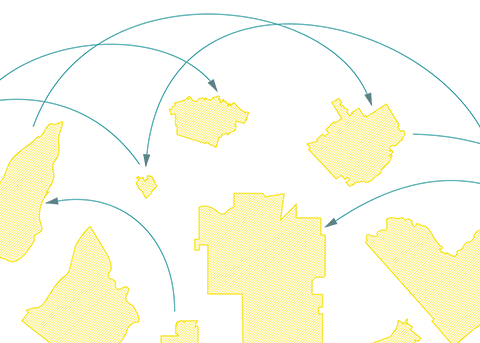Cimate change isn’t a future problem—it’s happening right now.
And we may not be able to stop it. A January 2011 study published in Nature Geoscience by the Canadian Centre for Climate Modeling and Analysis suggests there is little we can do to prevent drastic climate change, even in a highly unlikely “zero-emissions” scenario. If all emissions ceased today, the study still suggests a temperature increase varying between one and four degrees Celsius for the next thousand years—meaning longlasting changes of epic proportions. How we respond and adapt to climate change is therefore critical going forward.
At a December 2010 of the Adaptation Advisory Committee, part of Canada’s Climate Change Adaptation Project, city infrastructure was noted as the top priority concern when considering industries and disciplines that are most immediately vulnerable to the impacts of climate change.
Whether your city can cope depends on where you live.
As part of our survey this year, we evaluated Canadian cities’ plans for climate change adaptation and mitigation. Canadian coastal cities analyzed in our survey have developed climate change adaptation strategies and plans, with Vancouver and Halifax leading the way in actively funding and implementing projects. For example, “Climate Responsive Design” has led to a stabilization project in Vancouver’s Stanley Park. Halifax’s Climate SMART (Sustainable Mitigation and Adaptation Risk Toolkit) has been in action since 2005, an ongoing partnership between the municipal, provincial and federal governments to plan and implement climate change initiatives. Victoria, Saint John, and Charlottetown also have adaptation studies and plans underway, which the projected sea-level rise will put to the test.
Mainland cities are also working to adapt. Both Toronto and Montreal are engaging with multiple stakeholders and researchers to model and assess climate change risks to inform future city planning. Yellowknife and Whitehorse, northern cities that may have already seen the impacts of warm winters, are also actively developing climate change strategies.
Still, some cities have no concrete plans on climate change, let alone adaptation. Hamilton, Mississauga, Edmonton, and Saskatoon may not be as directly affected as Iqaluit or Victoria, but the countries that grow their bananas surely will be. In our interconnected and global society, no one is untouchable.
Click here to go back to the ranking landing page.







